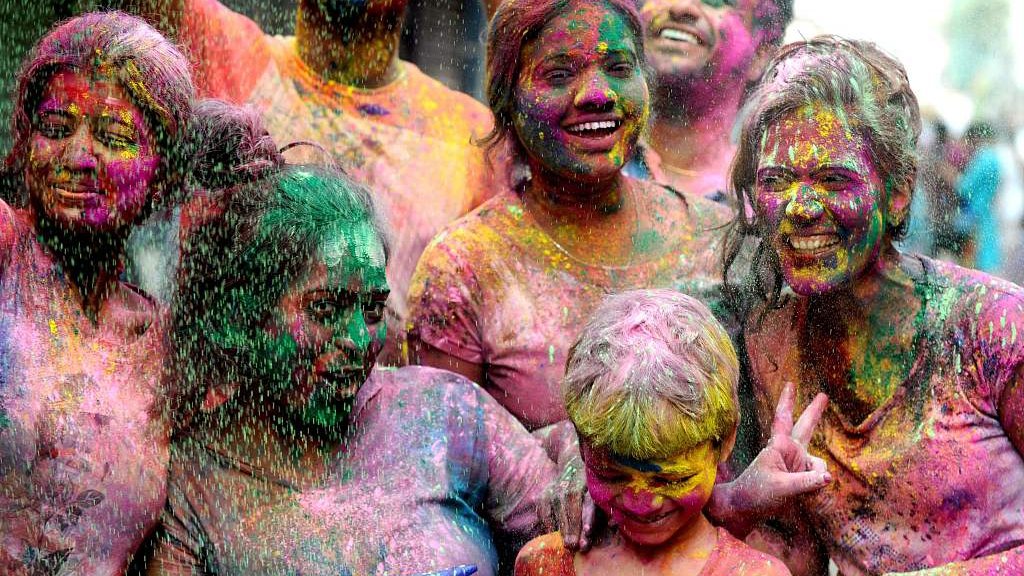Holi is the day when kaleidoscopic clouds of bright shimmering colors blur all lines of class, caste and religion, and even foreigners join the locals in thronging the streets for raucous celebration of the world's most colorful festival. But fascinating legends and deep-rooted traditions lie beneath the flamboyant chaos of singing and dancing revelers.
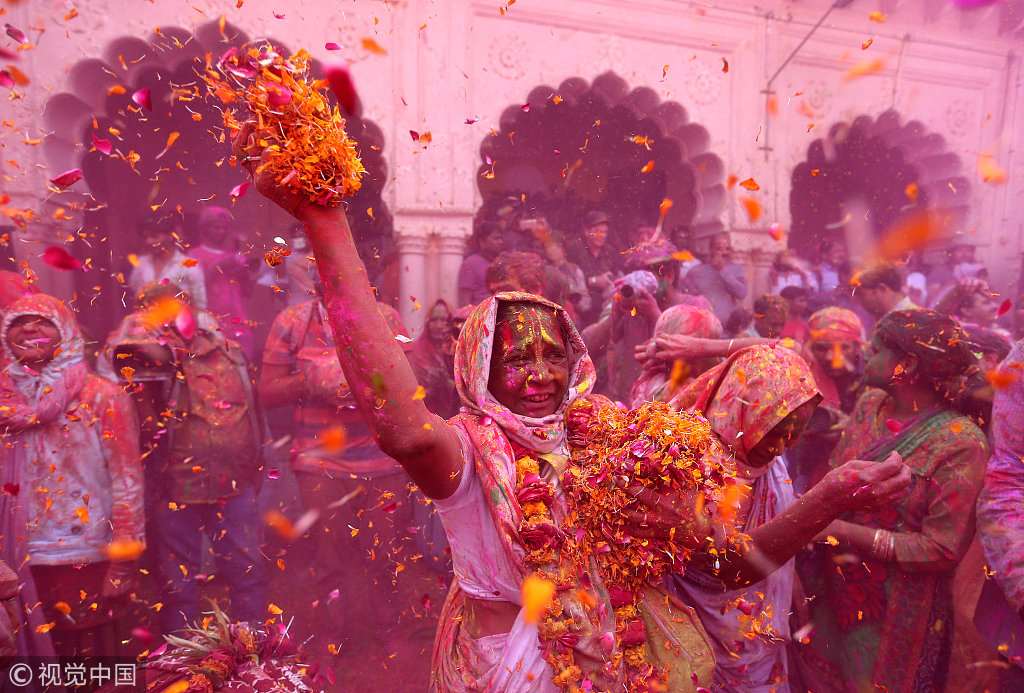
Widows take part in Holi celebrations in the town of Vrindavan in the northern state of Uttar Pradesh, India, March 9, 2017. /VCG Photo
Widows take part in Holi celebrations in the town of Vrindavan in the northern state of Uttar Pradesh, India, March 9, 2017. /VCG Photo
What is Holi?
Holi is a festival celebrated by the majority Hindu population. For centuries, every year, millions of people across India and Nepal create bonfires and cover family and friends with splashes of colored powder and water to commemorate the dawn of spring season. Some say it's an "official" declaration to replace your winter wardrobe with cool summer clothes. But this carnival of colors also celebrates love, equality, fertility and the triumph of good over evil.
The festival finds a mention in the fourth century poem Jaimini Mimansa, written by ancient Nepali scholar Jaimini. Indian king Harsha also mentions "Holikotsav" in his seventh century Sanskrit love drama "Ratnavali".
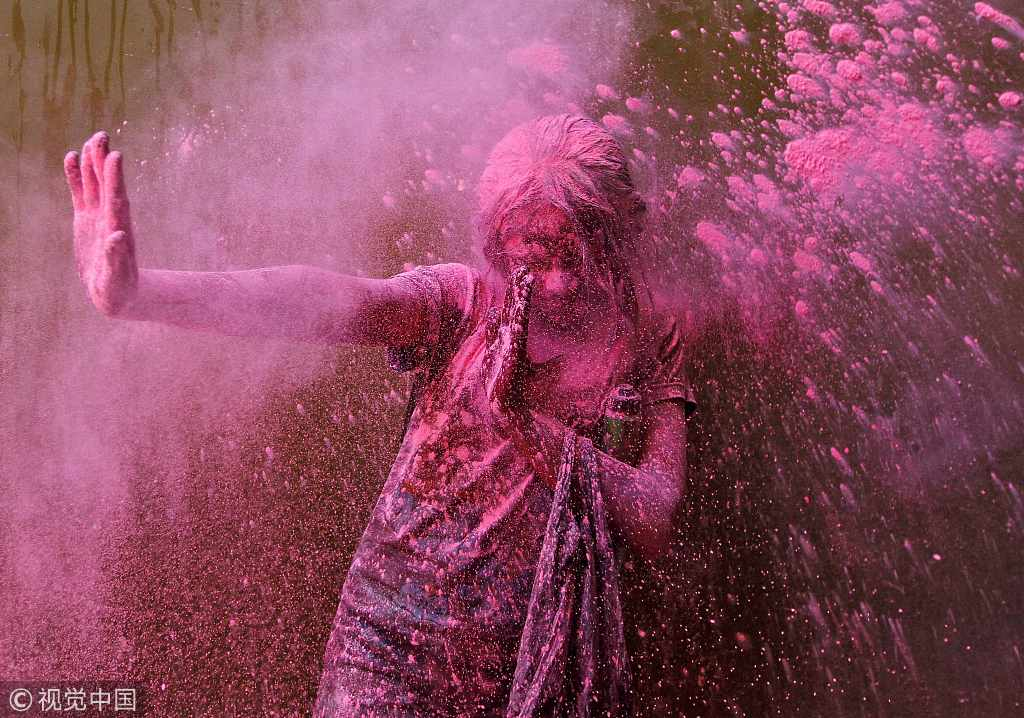
A girl smeared with colors reacts as another girl throws colored powder at her during Holi celebrations in the southern Indian city of Chennai, March 16, 2014. /VCG Photo
A girl smeared with colors reacts as another girl throws colored powder at her during Holi celebrations in the southern Indian city of Chennai, March 16, 2014. /VCG Photo
The Legend of "Holika"
As per Hindu mythology, the festival gets its name from Holika, the demon sister of evil King Hiranyakashyap. As the story goes, the powerful immortal king forbid everyone from worshiping Hindu god Vishnu, however, his own son Prahlad defied his order which enraged the king and hence, he conspired to kill his own son. The king ordered Prahlad and Holika, who was immune to fire, to sit on a pyre. To everyone's surprise, when the flames struck, Holika was burnt to death despite her immunity and Prahlad miraculously lived on. The moral of the story: Good always triumphs over evil.
Since that day, people burn a pyre of wood and cow dung, that signifies the death of Holika, and people pray that the demons of poverty, diseases and hatred, too, burn with the same flames.

Villagers sing songs and play with colors during Lathmaar Holi celebrations in Nandgaon village in the northern state of Uttar Pradesh, India, March 22, 2013. /VCG Photo
Villagers sing songs and play with colors during Lathmaar Holi celebrations in Nandgaon village in the northern state of Uttar Pradesh, India, March 22, 2013. /VCG Photo
When is Holi celebrated?
Traditionally, Holi is a two-day festival. It begins with Holika Dahan (setting Holika on fire) on the night before the main festivities called Rangwali Holi (colorful Holi). It falls on the last full moon of the Hindu lunar month Phalgun. So, as per the Georgian calendar, it is celebrated anytime between February and March. This year, it will be observed on March 20 and 21.
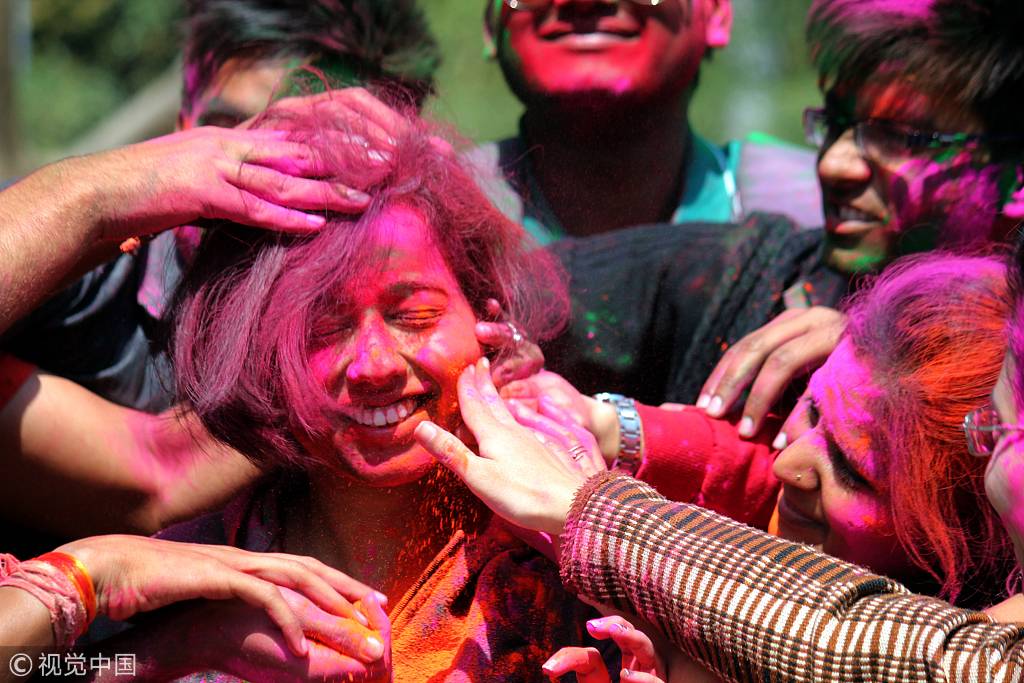
On Holi, throwing colors is seen as an expression of love. /VCG Photo
On Holi, throwing colors is seen as an expression of love. /VCG Photo
Why smear colors?
The custom of throwing colors and water is believed to have originated from the divine love story of Hindu lord Krishna and Radha. Krishna is depicted as a dark-skinned boy in ancient Hindu texts, and according to Hindu mythology, Krishna doubted if fair-skinned Radha would ever accept his love proposal and shared his worry with his mother Yashoda, who advised Krishna to smear dark colors on Radha's face and change her complexion. Therefore, smearing people with colors is also seen an expression of love.
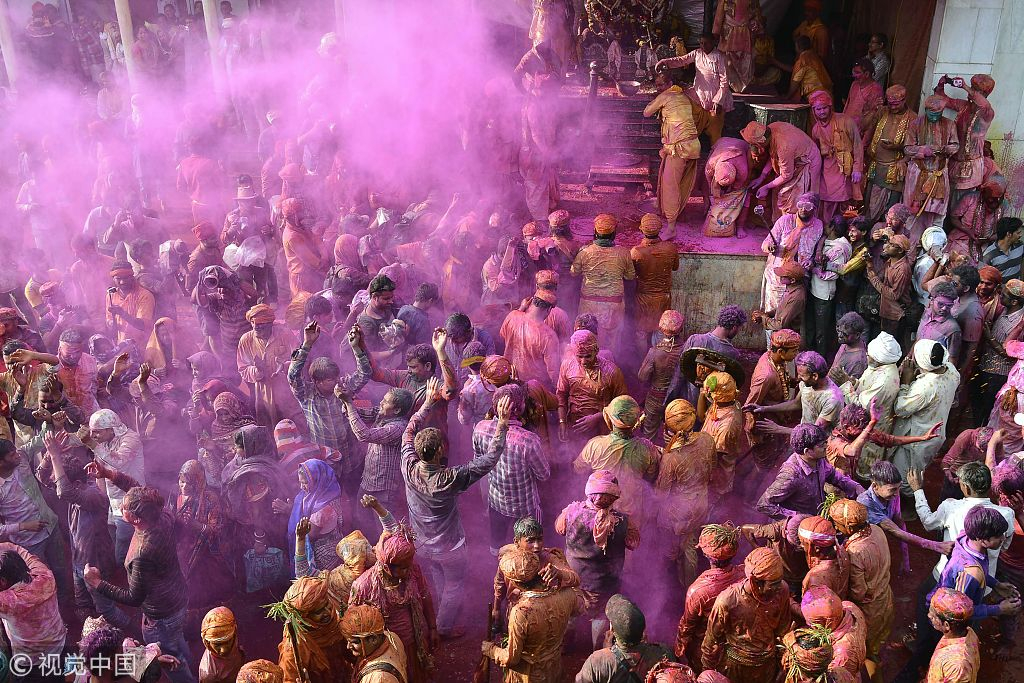
Indian Hindu devotees celebrate Holi, the spring festival of colors, during a traditional gathering at Nandgaon village in the northern state of Uttar Pradesh, India, March 7, 2017. /VCG Photo
Indian Hindu devotees celebrate Holi, the spring festival of colors, during a traditional gathering at Nandgaon village in the northern state of Uttar Pradesh, India, March 7, 2017. /VCG Photo
How to play Holi?
Holi is a colorful and messy gathering, so dress up right. Wear cheap white clothes, nothing fancy! Cover your hair, face, arms and legs with oil. It's better to tie your hair or just wrap a scarf around your head. After this, you are ready to hit the party. Don't forget to buy different colors of gulal (colored powder), water gun (pichkari) and water balloons.
There's no party without good food, gujiya, a dumpling-like sweet stuffed with dried fruits, coconut and cardamom, is enjoyed by everyone during the crazy color festival. Some revelers toast Holi with bhang, a milky beverage mixed with edible cannabis juice.
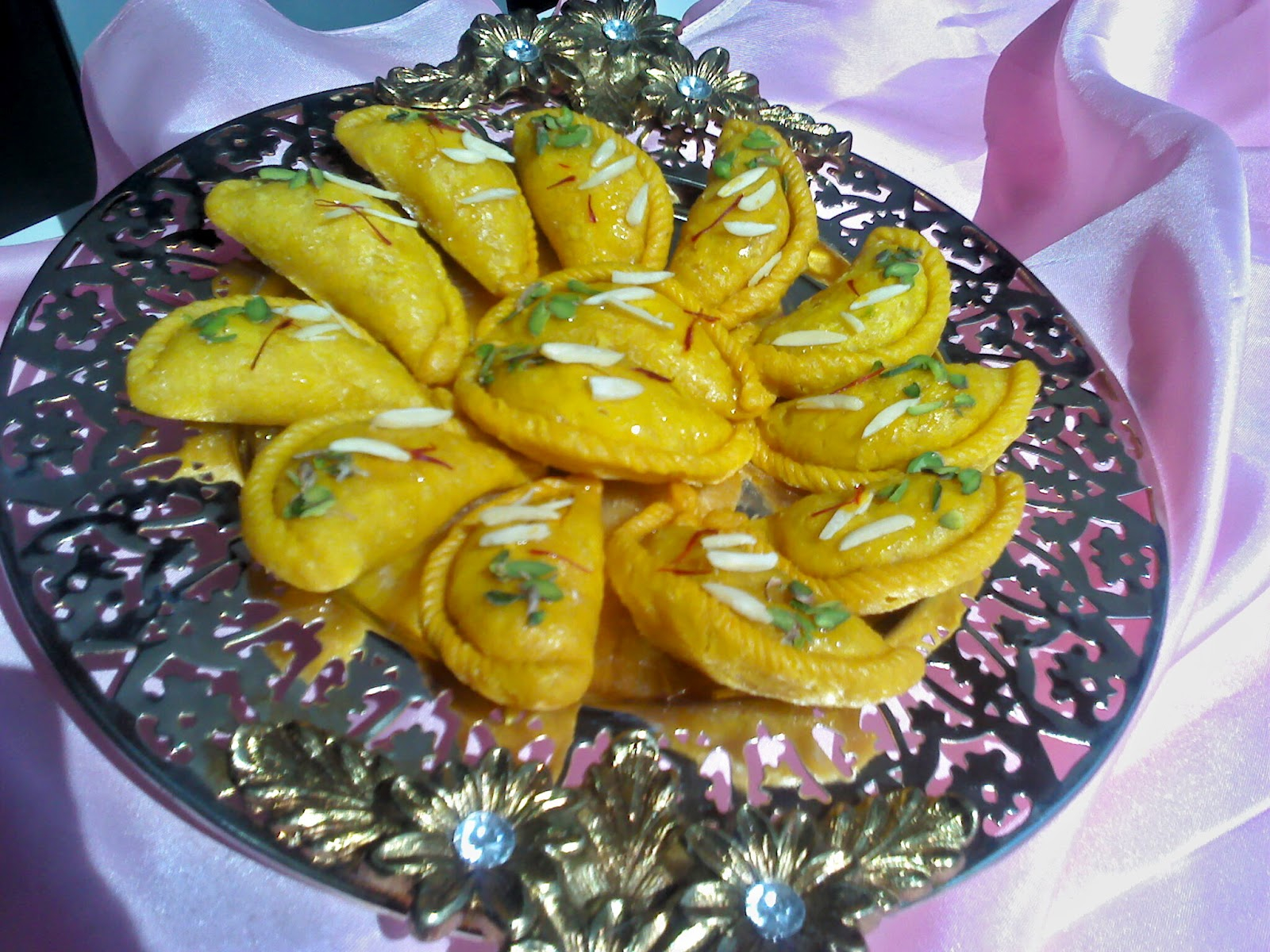
Mawa Gujiya are a traditional Indian fried pastry stuffed with dried fruits and nuts. /courtesy of Haldiramsonline.com
Mawa Gujiya are a traditional Indian fried pastry stuffed with dried fruits and nuts. /courtesy of Haldiramsonline.com
Holi 2019: A tinge of politics
Colors and sprinklers with the names of India's political leaders are a new rage. Among the popular ones are prime minister "Modi's pichkari" (water gun) and opposition leader's "Rahul Gandhi gulal" (colored powder), as election fever grips India, Holi is soaked in political hues.
India goes to polls in April and with less than a month left, political parties are not leaving any stone unturned to paint the voters with their party colors. Local traders are minting money as bulk orders of sweets and colors are pouring in from politicians and to-be candidates. A happy Holi for all it seems!
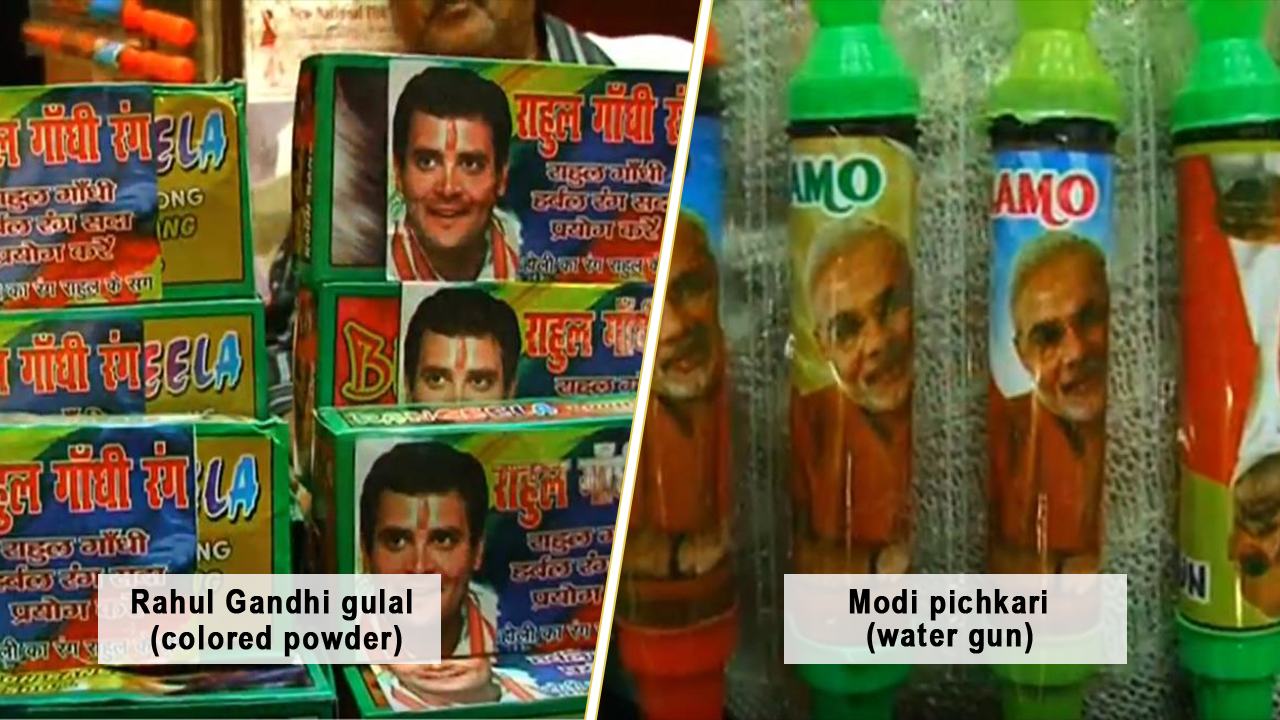
In India, election fever soaks Holi in political hues. /courtesy of ANI
In India, election fever soaks Holi in political hues. /courtesy of ANI

